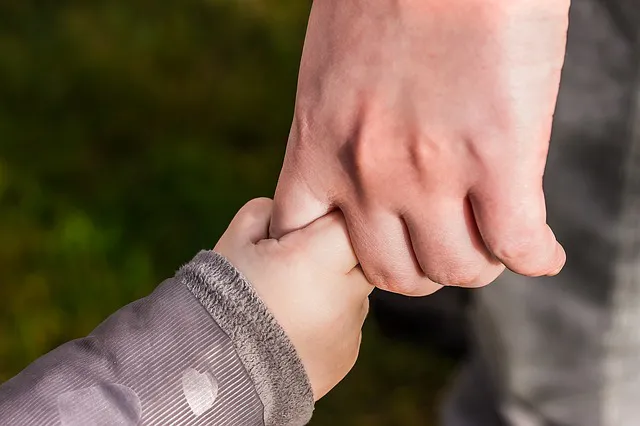A Prayer:
It’s not only an expectation but fervent prayer of a parent of a child with special needs that the child is always in a safe secure environment and that the professionals, teachers, caregivers, family members, all people dealing with the child equally value the child and are kind and sensitive towards the child looking beyond the disability.
A few Ground Realities ;
The startling reality is otherwise. Most children due to the intellectual and developmental challenges are at higher risk of abuse and compromised safety. The historical and traditional biases act as barriers in seeing the child as a little person with feelings, emotions and equally in need of respect and dignity.
In many instances, the challenging behaviors exhibited by Children may also be on account of them feeling bad due to some inconsiderate treatment and their inability to express. It may not even be intentional by the adult. As the child does not resist or comment on his displeasure, the adult may not even know that holding the arm of the child while taking the child to the washroom was very uncomfortable for the child. A Neurotypical child is constantly communicating his or her thoughts feelings needs and fears. A caring adult will ally these fears. But what happens generally in the case of a child who may have a communication disorder or intellectual disability. Hence there is a very strong need to build safety protocols and handling and management processes which keep the dignity of the child as a focus.
Know the personality of your child and share it with the therapists teachers educators.
Hence it is of utmost importance to establish basic standards of safety and for the parent to lay down his or her expectations to the special school or inclusive school, class teacher, therapy center the therapists working with the child need to know the nature and temperament of the child equally well, the child may be too sensitive to the tenor tone or even a non-smiling face …..so please collaborate with all involved in the welfare of the child and help create a safe place.
Limitations to be aware of ;
1. They are often not aware that they are victims of abuse because of:
– poor communication skills/ limited verbal ability
-a limited sense of danger
-a limited understanding of sexuality or sexual behavior,
-they are also at far higher risk because of a lack of mobility
– high reliance on adults for many of their needs
– having a variety of caregivers and care settings
– the need for intimate care such as dressing and toileting needs
Any form of abuse or threat of being in a place that is not safe creates poor self-confidence, low self-esteem, feelings of isolation, powerlessness, and limited assertiveness.
Applicable to ;
The steps outlined below must also be followed by any school for children with special needs, be it an Integrated or Exclusive school, including Child Development Centres, standalone Children Clinics, Learning Therapy centers, Play centers, Crèches, Early Intervention Centres, Assisted Living Homes, NGOs run exclusively for children with special needs in all categories of visual impairment, physical disability, cognitive-learning difficulties, speech impairment, hearing impairment, emotional and behavioral difficulties. These may be run by trained or semi-trained professionals or experts conducting therapy sessions with children for physical/ cognitive/ soft skill development. Regular schools that may admit students with special needs would also be bound by the guidelines of this section.
Preventive measures help build a safe zone where children feel comfortable and relaxed can concentrate on their development plan and learning and are in no danger whatsoever during their time at the center.
These guidelines will help create a caring, protective and safe environment for all children, to reduce their vulnerability in all situations and facilitate their safety in all places, including public spaces. A ready checklist of simple measures can enhance safety.
The very obvious aspects to evaluate ;
1. Securing of premises; is the Perimeter secured, who all have access to the center. Is there restrictive movement ..( eg during therapy hours, a repair person says the air conditioning should not be in the room)
2. Surveillance and CCTV at critical areas within the premises
3. Recruitment policy of staff, caregivers, and helpers; Does the center or do the school and center do complete background verification.
4. Does the school/therapy center submit to you a comprehensive “Child Safety Plan”.
5. “Shadows”, caregivers present with the child; most schools do not take direct responsibility for the child and ask parents to send a “Shadow teacher/helper “. Please do not allow the school to absolve its responsibility. The shadow should also be monitored by the school and should be fully aware of all the child security plans and policies. ( we have heard of quite a few instances of the shadow personnel violating the dignity of the child and child abuse ).
6. In case of Medical emergencies what is the protocol followed by the staff. First aid kit available, the nearest hospital they have a tie-up with.
7. Behaviour issues and Meltdowns; what is the protocol followed and standard procedures in case a child is having a transition issue or hit someone, flopped on the middle of the road or refuse to leave the toilet ..or banging his head .. the list could go on, the specifics are not important here is how are such situations and more handled by therapists, educators, and school management …what is their outlook on ” conflict resolution “. How much physical involvement, do they reprimand the child, and how, how do they resolve the issues ….most significantly is the staff sensitized to non-verbal issues. If the child pulls the hair of the therapist during a session or pinches what is the reaction of the therapist, how is the situation dealt with? As a parent, you have full right to inquiry, and please also share your standard practices which help the child settle back.
What is the safety protocol followed in terms of fire, electrocution, earthquake, etc …
Awareness and sensitization sessions; please participate and collaborate with schools
Measures to reduce physical hazards that risk the safety of Children. Eg Safety of Glass Installation
Hygiene and Sanitation and Health Policy of the Centre and School:
– personal hygiene of the caregiver staff and helpers and therapist too. Please see if nails are cut, no skin infection. In case someone has a cold or flu do they wear a face mask.
- All toys, sensory tools should be clean and not broken with no sharp edges. Body brushes please carry your own set or insist on it being sanitized. Do not get the Z vibe oral motor brush used on your child in case it’
- The mattress and Foam pads should be clean and regularly washed. In case there is a toilet accident, the helper or cleaning staff must If The center Is in the basement should have proper ventilation. Dust mites and asthma triggers should be minimal.
- In case the therapy room or learning center is in a basement set up, please see if there is sufficient natural light and the place has good ventilation. Damp walls often trigger asthmatic bouts. The exhaust fans should be in working condition and there should be no signs of mildew, fungus, or dampness on the walls, ceiling.
- Ask for a safety plan which specifies procedures followed by the Centre to prevent and handle emergencies such as accidents, medical emergencies
- Background check of staff: verification of staff a must all staff must know of punishment for sexual or violent behaviors
- Create awareness among all actions of personnel about child safety and simple preventive measures
- Good touch bad touch
- Bullying
- All sessions should be carried out in unlocked classes. During therapy no doors to be locked from inside
- Sessions are observable at all times either through CCTV, viewing window or through physical access
- Special infrastructure, including ramps, railings toilets for disabled
- Most cases of abuse happen to incase the child, not toilet trained, insist on the toilet protocol(the process of taking to the toilet, handling, undressing dressing cleaning, etc ).
- Clear code of conduct to be laid out for all children, support staff helpers aayah . They must be aware of violating these and the strict punishments. Child Protection Policy should also lay down a code of conduct. ( no filming of the child without the permission of parent ) .
- Parents have a right to be present during therapy and this cannot be prevented
- For Children who require assistance while using toilets, the minimum assistance required by the child should be clearly specified, along with specific dos and don’t s.
- Please ask if the Staff is periodically sensitised and made aware on various issues , challenges and issues including on non verbal behaviour challenges, trauma meltdowns etc
- Some therapy Protocols require bodily touch leading to a this. Line between good and bad touch . Strict Guidelines must be issued to staff. For Children who require to be placed on therapist lap for Occupational or physical therapy, the procedure should be explained to the parent .
- Any therapy which requires bodily touch to private areas must be done only in presence of a parent and a female attendant.
- Incase off a toilet accident there must be a clear protocol. No matter how young the child is ,will be only changed in toilet . Attendants must be trained to maintain the dignity of the child strictly following Protocols for intimacy care . Irrespective of age and cognitive abilities.
- It must be clearly laid out to special educators and therapist and care giver that no form of abuse will tolerated be it physical., Emotional or verbal .(Eg yeh baccha pagal hai…, Islka Dimag nahi hai ).
- A constant communication channel with the parents at home is required so that both sides can report discuss any untoward behaviour or resistance .
- There should be a HELP LINE for emergency. Clearly visible to all .
- Though parents are encouraged to further work with their therapy centres and special schools to develop its own Child Safety Policy, there are many aspects of the guidelines that may help ensure minimum safety standards are in place.





